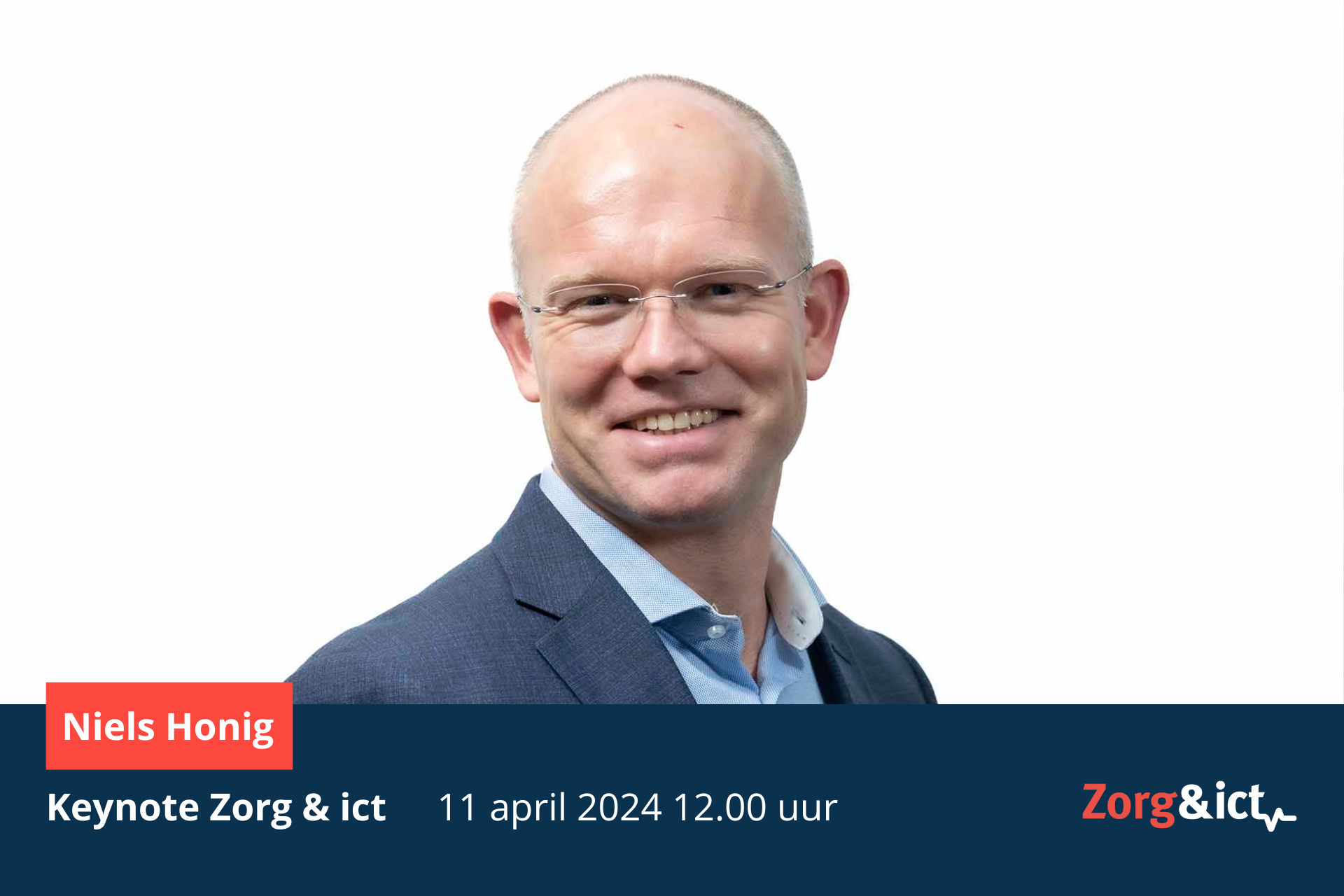No digital innovation without care process redesign. And so professionals deserve a say on both counts. This is what board chairman Niels Honig of Franciscus Gasthuis & Vlietland advocates: "Technological questions start with redesign of the care process. You can only do that well if you involve the professional. My criticism is that they still participate too little at consultation tables."
Despite this criticism, Honig is "hopeful" about the digitization of Dutch healthcare. "We no longer send the patient to the next hospital with a DVD on their stomach. Patients are less and less likely to have to tell their story twice. In sharing file information and medication transfer or cooperation with the obstetrician, we have made great strides."
Joint
Honig also sees the climate around digitization changing. "For a long time the real sense of urgency, knowledge and scale were missing. Not that nothing was happening, but there was a patchwork of apps, platforms and all kinds of applications with little consistency across sectors. Healthcare parties now have a greater sense that we need to do it together. They understand that partial solutions only make this already complex care more complex."
National target architecture
As far as Honig is concerned, a good example is the joint route to data availability. In his view, this is the technological linchpin of further digitalization. "If we don't get that organized, we will remain stuck in point solutions. With the choice of a national target architecture, we are now taking very good steps in this regard. It is good that with CumuluZ there will be a basic infrastructure that is non-competitive and non-commercial. If we know how to find each other better and do not make it difficult for each other as healthcare parties with our own point solutions, we will also have a stronger position vis-à-vis large tech parties."
Transition money
That the House of Representatives, pending formation, will not commit to disbursing the much-needed, next tranche of transition funds does not worry Honig for now. Many digital processes that are important in the context of the Integral Care Agreement (IZA) have already started.
Honig: "I think we agree that technology can mean an awful lot in healthcare. Think of prevention, avoiding double treatment, working more efficiently and reducing both physical strain and administrative burden. Digitalization involves large sums of money, but it is the best investment we can make at this time. That politics may give some double signals, we should not be distracted by that. We must remain consistent in our approach, in our mission and in our conviction."
Financial latitude
Yet the question arises whether healthcare organizations have sufficient financial leeway for further digitization. With financial margins of around 2 percent, the room for investment is limited. "Hence, you have to join hands and look for synergy," Honig responds. "You need scale to develop and implement, but also to properly judge an investment. For one organization, an investment of a few tons does not outweigh the returns, while in the further chain large savings can be realized."
Cross-chain ambition
Therein lies right at the heart of the difficulty of investing in digitization; the returns do not necessarily descend on the same place where the investments are made. "In a financial sense, it is sometimes difficult to fund cross-chain implementations," Honig acknowledges. "You do need a shared ambition, drive and trust for that.
Implementation
In the Rijnmond region, this ambition has coalesced into the plans for one common digital front door for all healthcare. A total of 29 healthcare providers in the Rotterdam region and the South Holland Islands have joined the Digizorg initiative. This brings with it the necessary challenges. "The common vision is there, technology is there," says Honig. "The real challenge is implementation in one's own organization. The complexity of the technology requires a lot of everyone's change power. The level of knowledge can vary from organization to organization. Some organizations already really have a digital strategy, others much less. Capacity is also unevenly distributed. An average hospital has dozens of employees in the ICT department, a university hospital might have more than two hundred. That is not comparable to the capacity of an elderly care organization or a general practitioner group."
Redesign
But regardless of size or digital maturity the task is the same for all parties, Honig believes. "The goal is to optimize the patient journey, really reasoning from the patient's perspective. So we should not just copy the current process flow into a new technological world. It also involves a redesign of the care process. This is not a technological issue, but fundamentally a healthcare question. You can only answer that properly if you involve the professional and the patient."
Administrative impotence
Is the professional open to this, or does the feeling of being the object of yet another innovation prevail when the workload is already sky-high? "I don't recognize that cynicism," Honig responds. "Unfortunately, it is not yet a matter of course that the professional sits at the consultation table. And that's not because the healthcare professional doesn't want to be involved. It is rather that we at the administrative table are thundering over each other with analyses about how bad things will be in the labor market over the next ten years. In doing so, we unintentionally radiate a sense of powerlessness instead of optimism and ambition for the future. This is not attractive to the professional doing the job today, or to those who still have to make a career choice or are in doubt. We don't show the beauty of the work that way."
Practice as a starting point
Precisely in order to include this professional perspective, professionals and nurses in particular should be more closely involved in consultation and decision-making about digitization, Honig believes. "The question, though, is how you have that conversation. You have to do your best to all speak the same language. That doesn't have to be complicated. You have to want to understand the practice and ask questions based on that. Otherwise, you run the risk of coming up with solutions from technology. Technology can do a lot, but the question is what a professional needs. Does it support you in your work? That's the basic question we should be asking much more often."
Scarcity
Honig's advocacy for nurses does not come out of the blue. He once began his career in healthcare as a nurse. And in addition to being a hospital administrator, he is vice president of the professional association nurses and caregivers V&VN. "It is our responsibility not to focus only on scarcity," Honig summarizes his managerial mission toward professionals.
"At least there is no dearth of motivation and creativity among professionals who think about what is best for the patient and have appropriate care as innate. Let's try to tap into that. Not: it's doom and gloom in healthcare so you have to work with technology, but: you're doing fantastic work, we need your creativity to realize the best outcomes and technology plays an important role in that."
Two-way traffic
When vision, technology and implementation come together, digitization is going to cause a major shift, Honig foresees. "What the patient does not yet experience enough is that he is part of his own healthcare process. Making their own appointments is becoming easier and easier, and access to their own records is increasingly well organised in most hospitals, but I think that in the next few years we are going to increasingly involve the patient as the director of their own healthcare process."
"With Digizorg, we want to make all kinds of different applications and patient-linked data available behind that common front door. This includes the information generated by the patient himself, so that there is two-way traffic and the knowledge and information that the patient has becomes part of the treatment. We are missing that now. I think we are going to make great strides in that. The whole of technological innovation and digitalization leads to patients being more in control. There will also be a different interplay with informal care and informal care, we will think differently about the relationship between care, health and quality of life."
Whether that scares the professional? Honig: "The professional wants nothing more than for us to achieve the best outcome for the patient."
Niels Honig acts as keynote speaker during Zorg & ict 2024. The largest health tech event in the Netherlands will be held from April 9 to 11 at Jaarbeurs in Utrecht.












